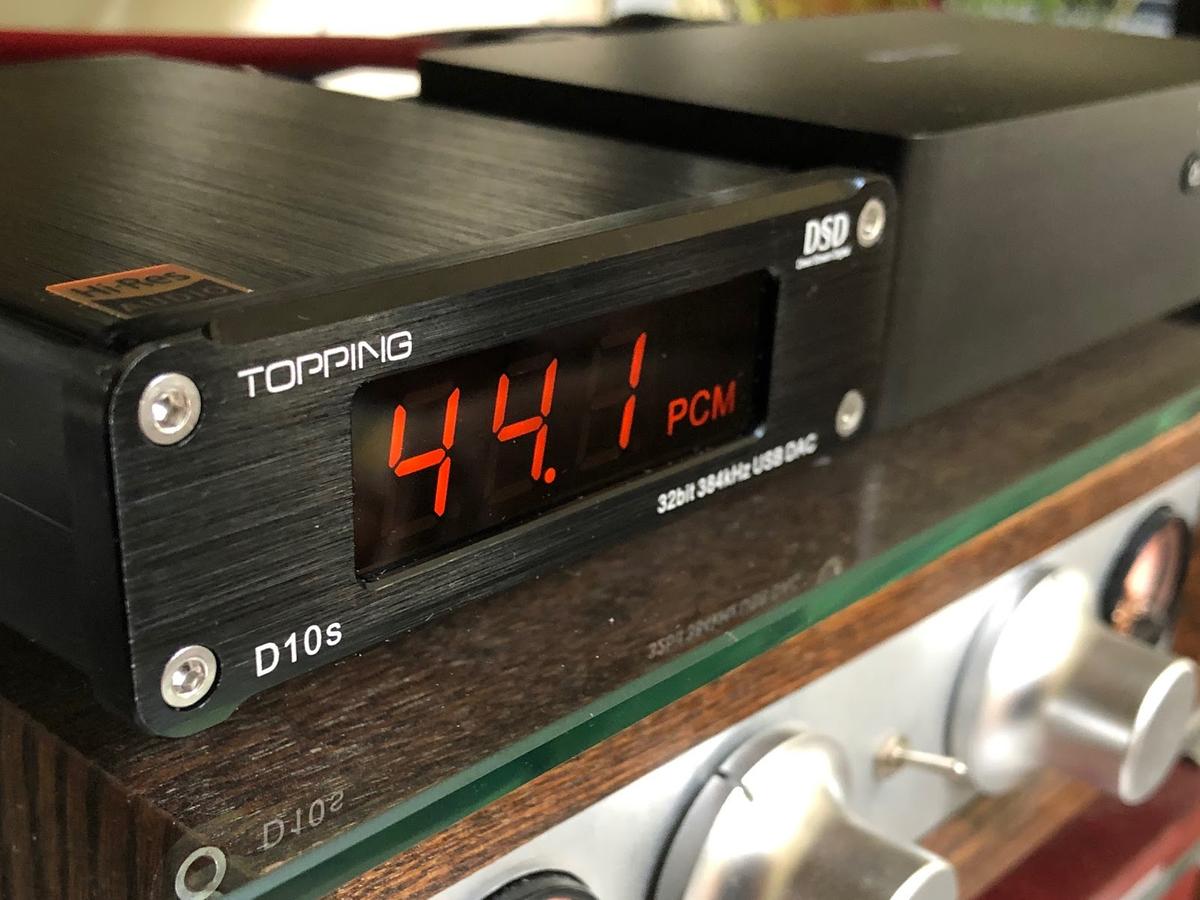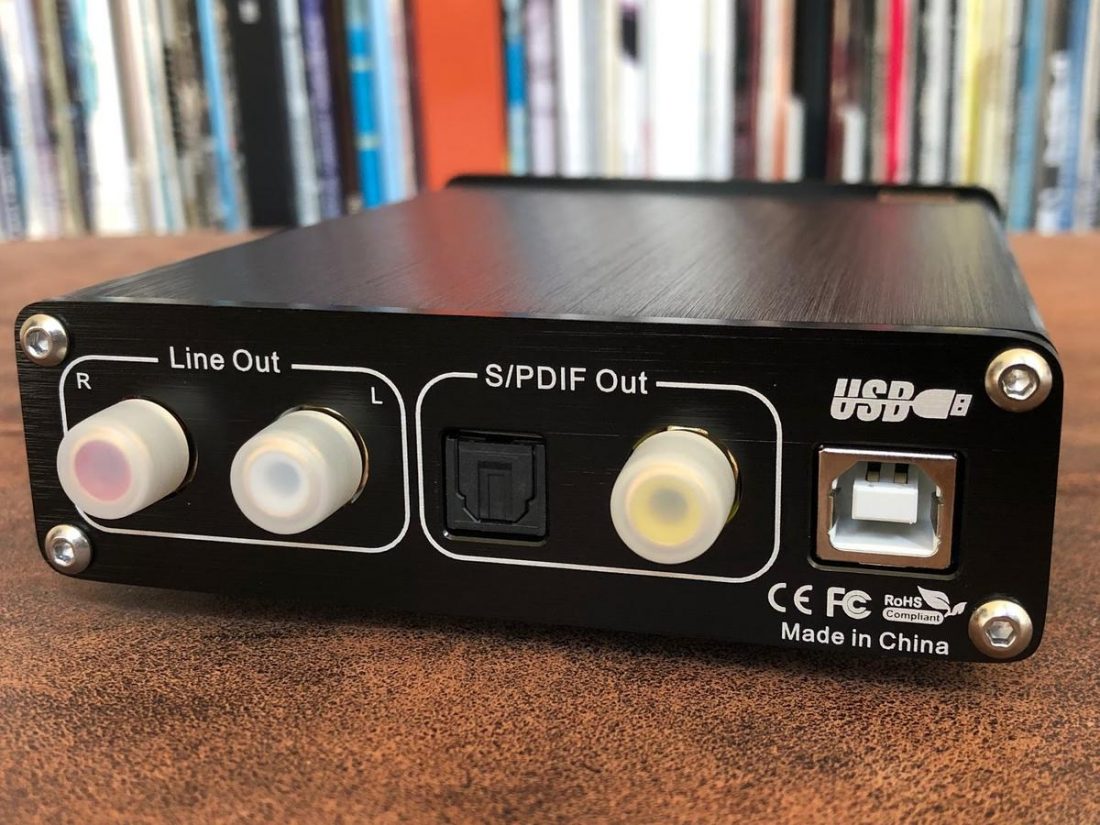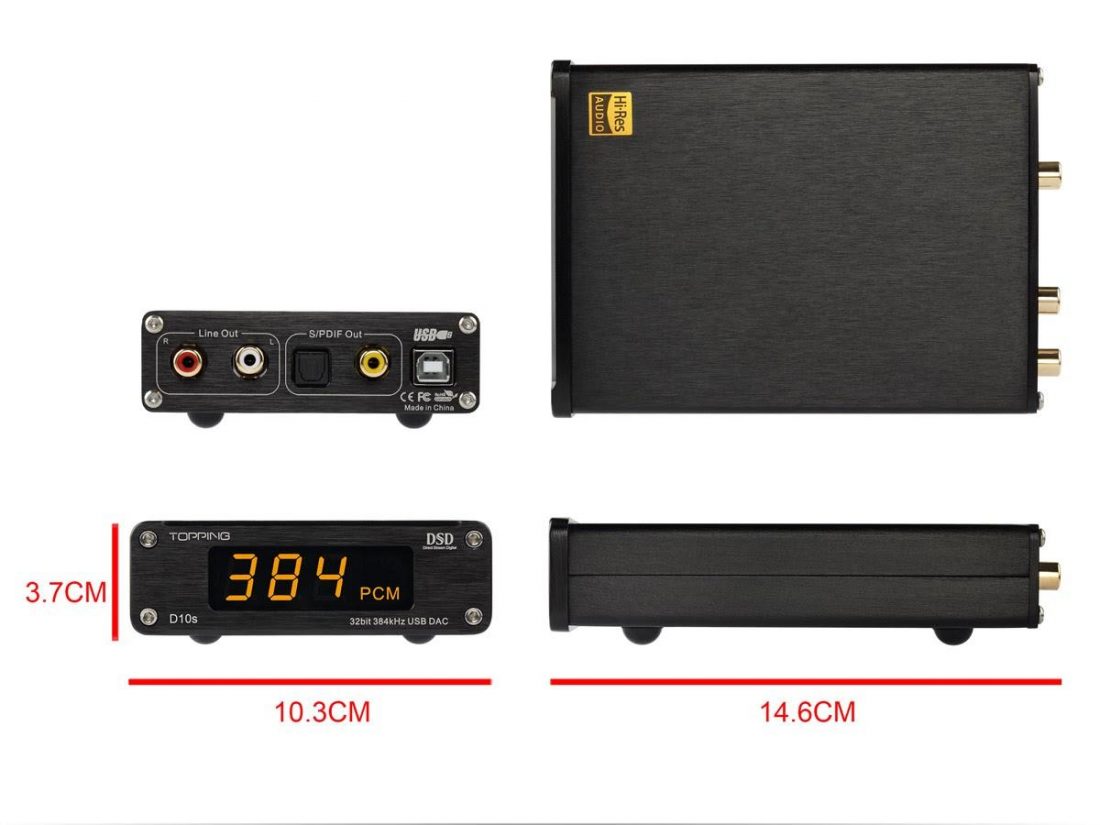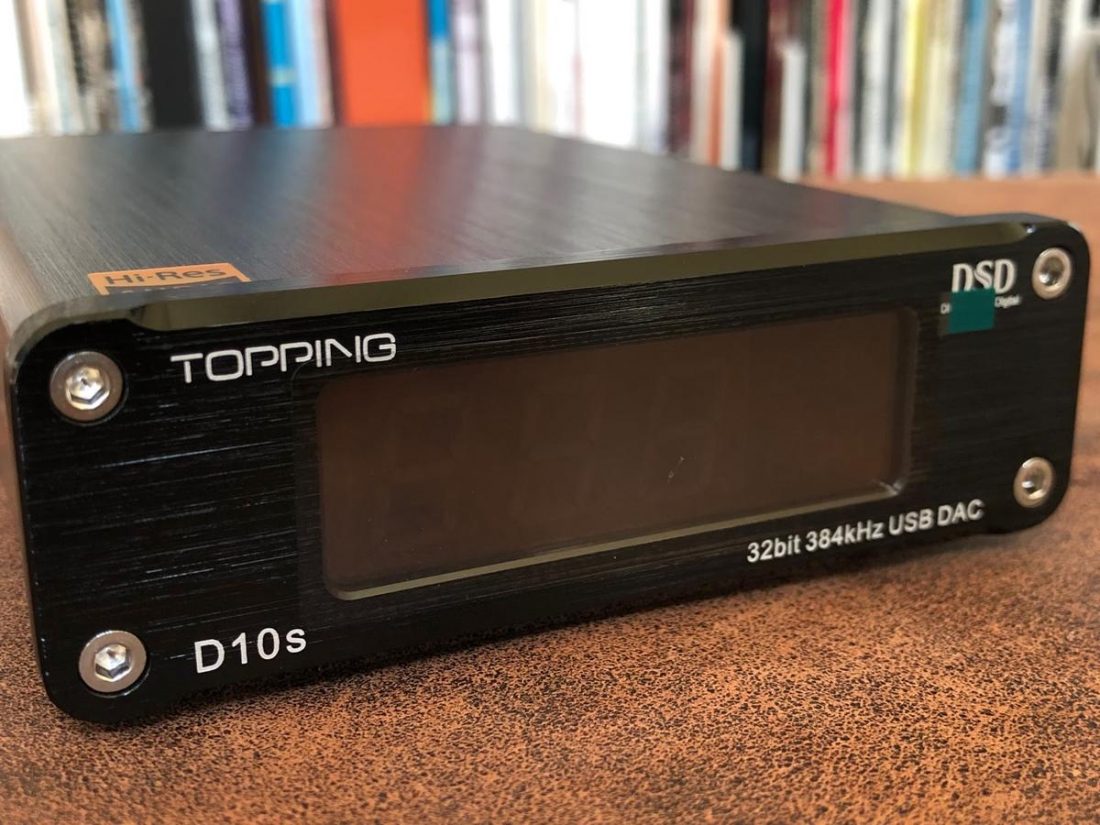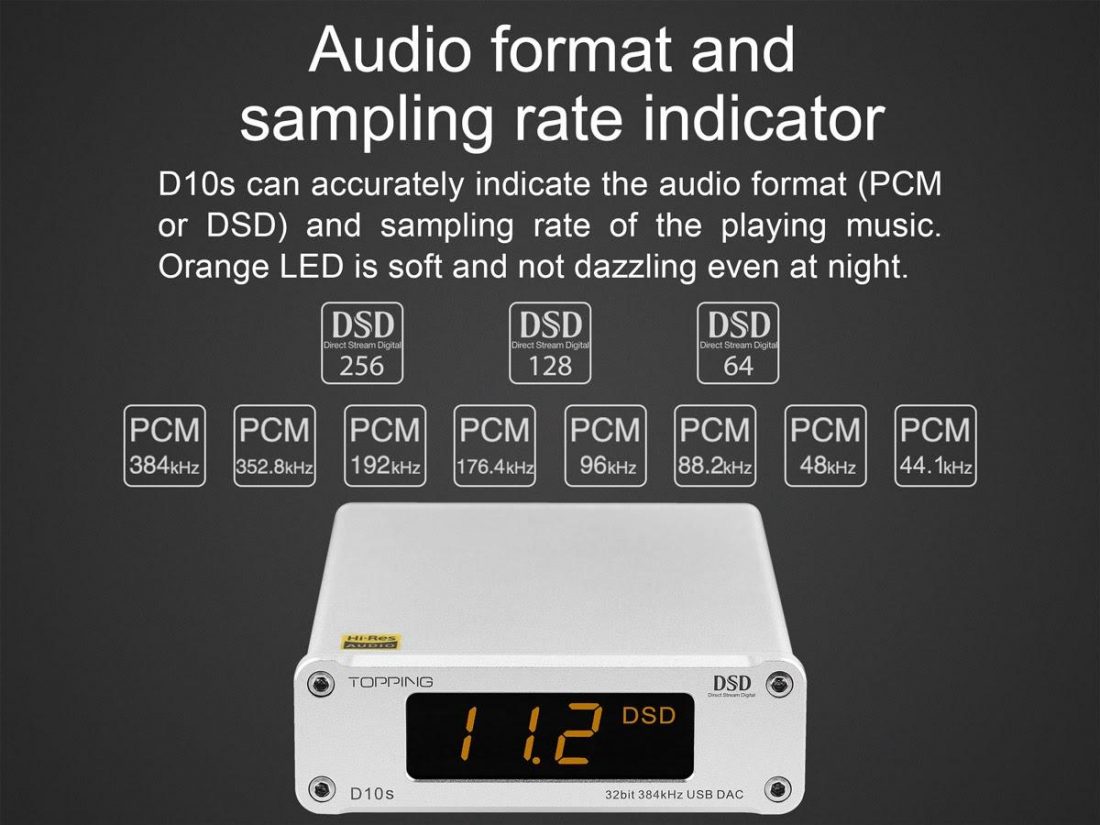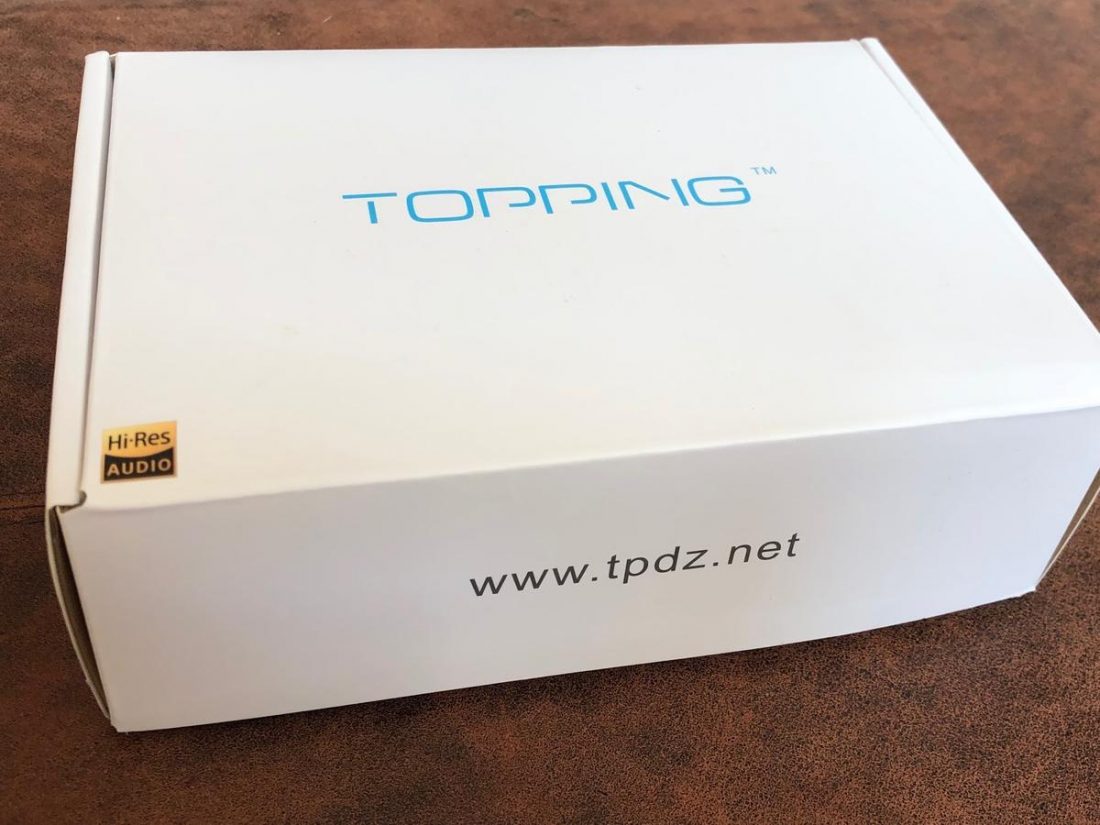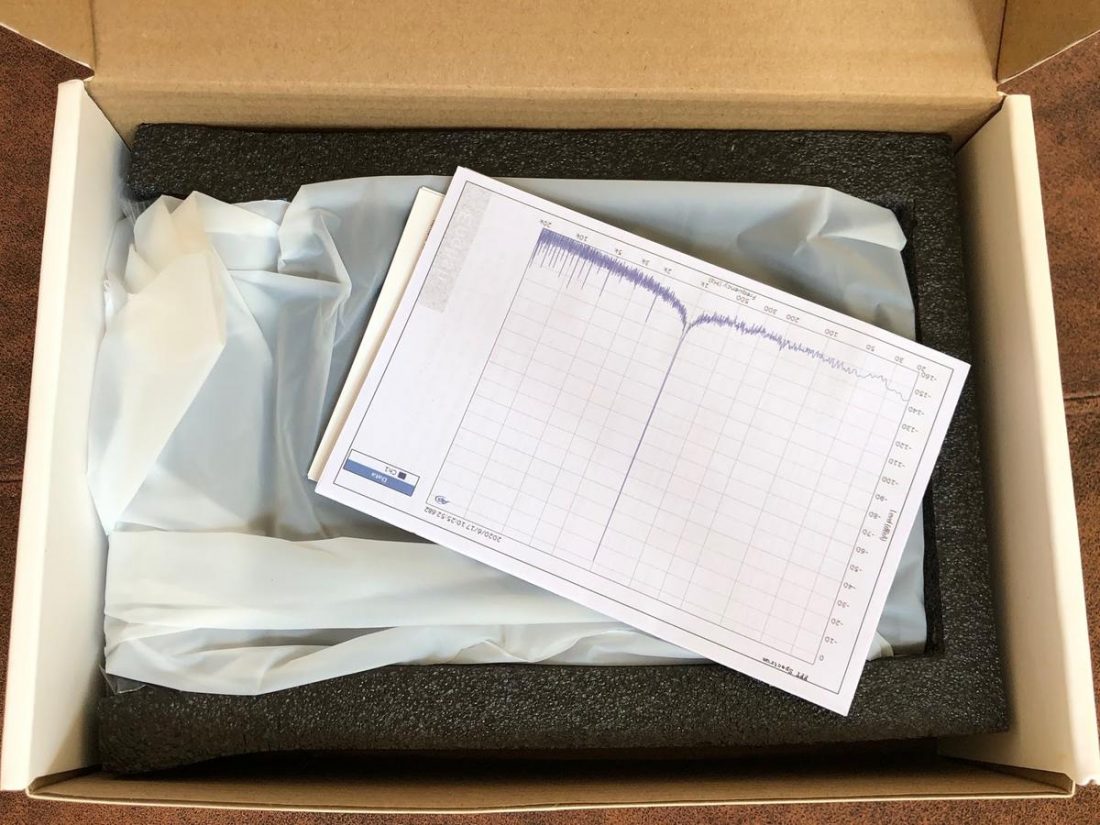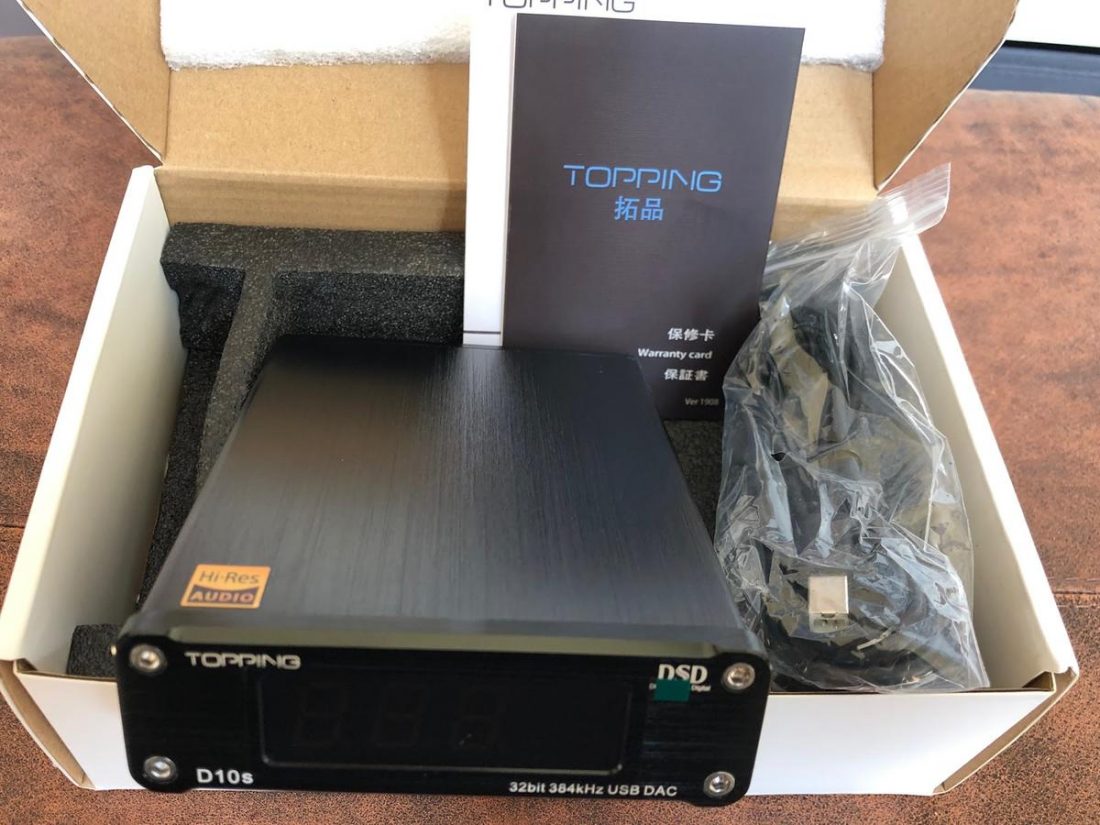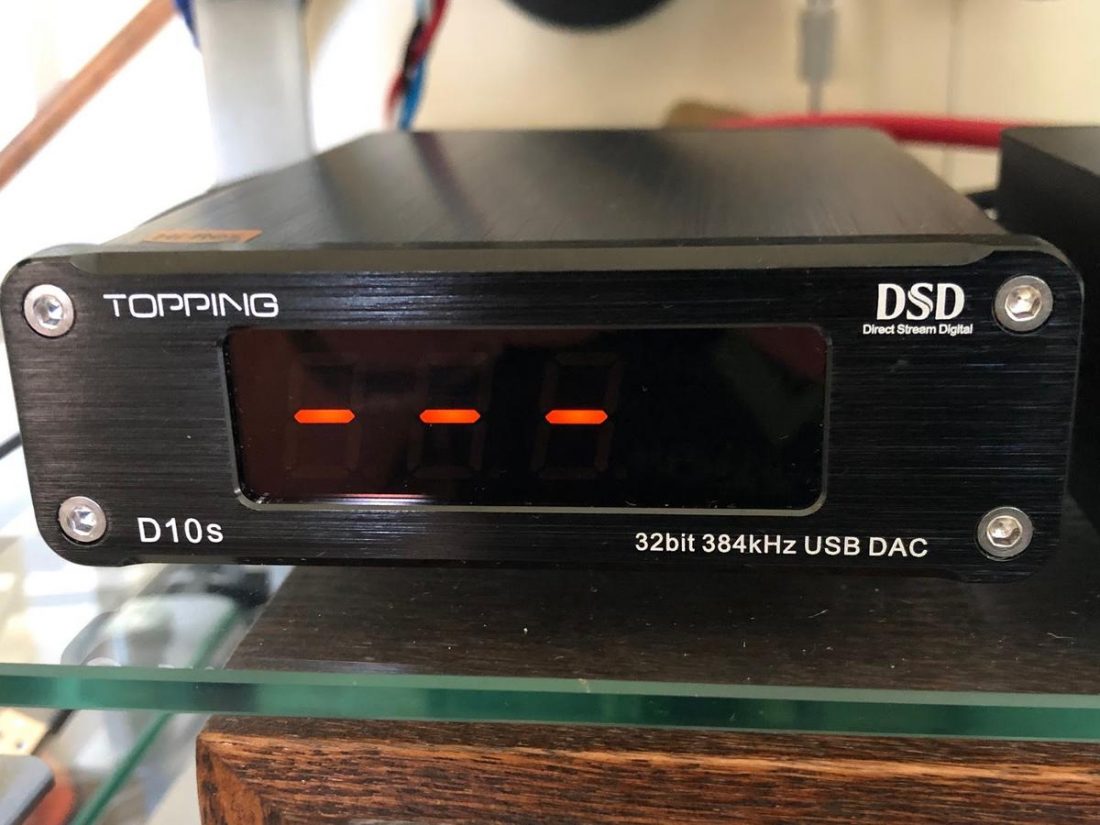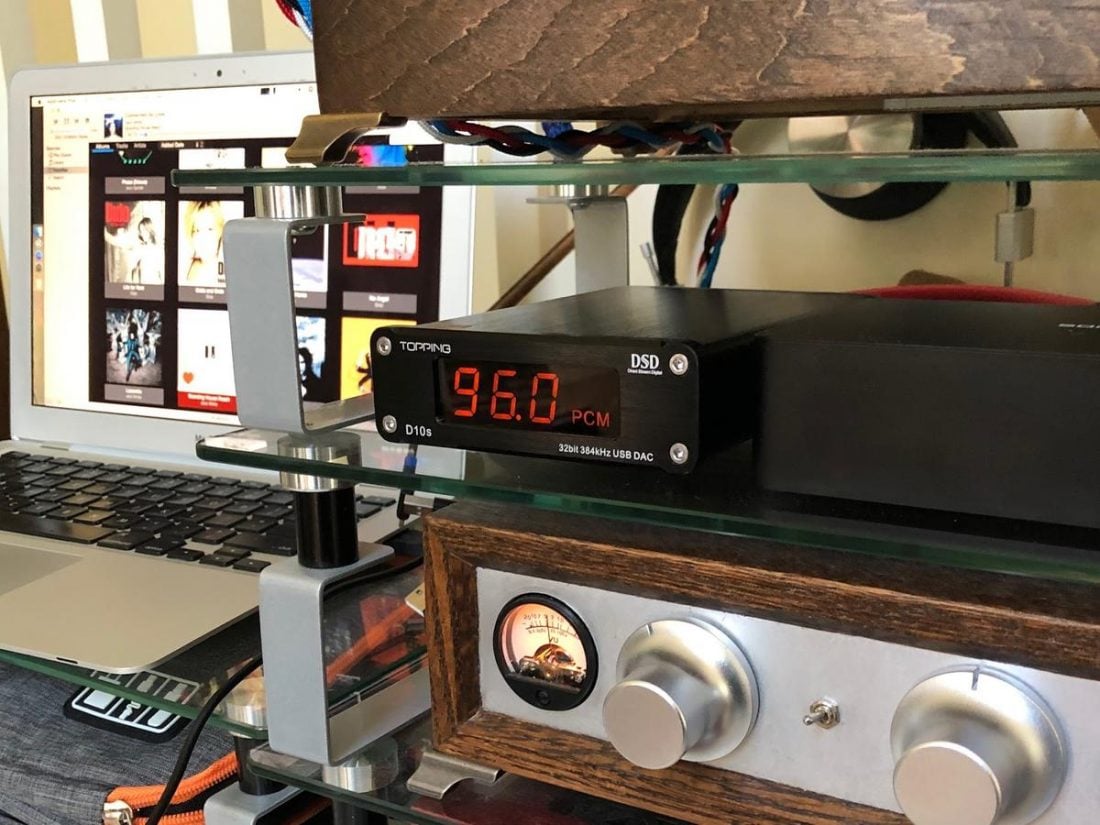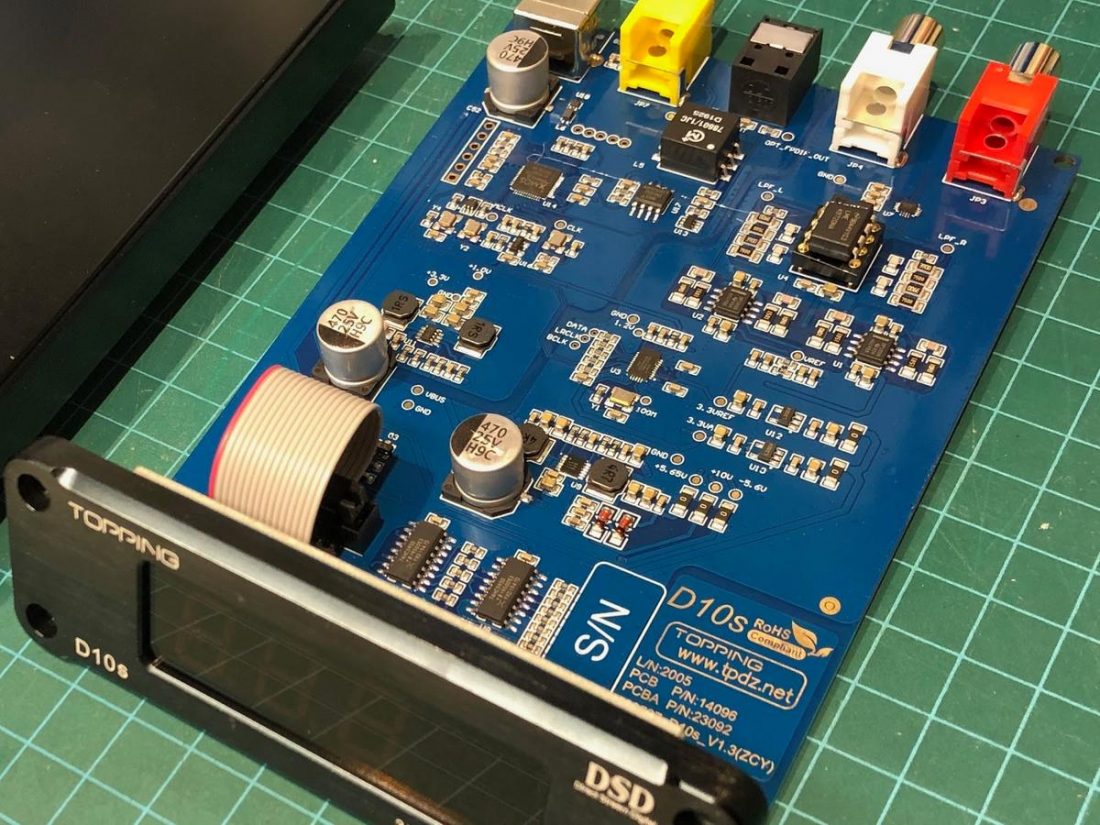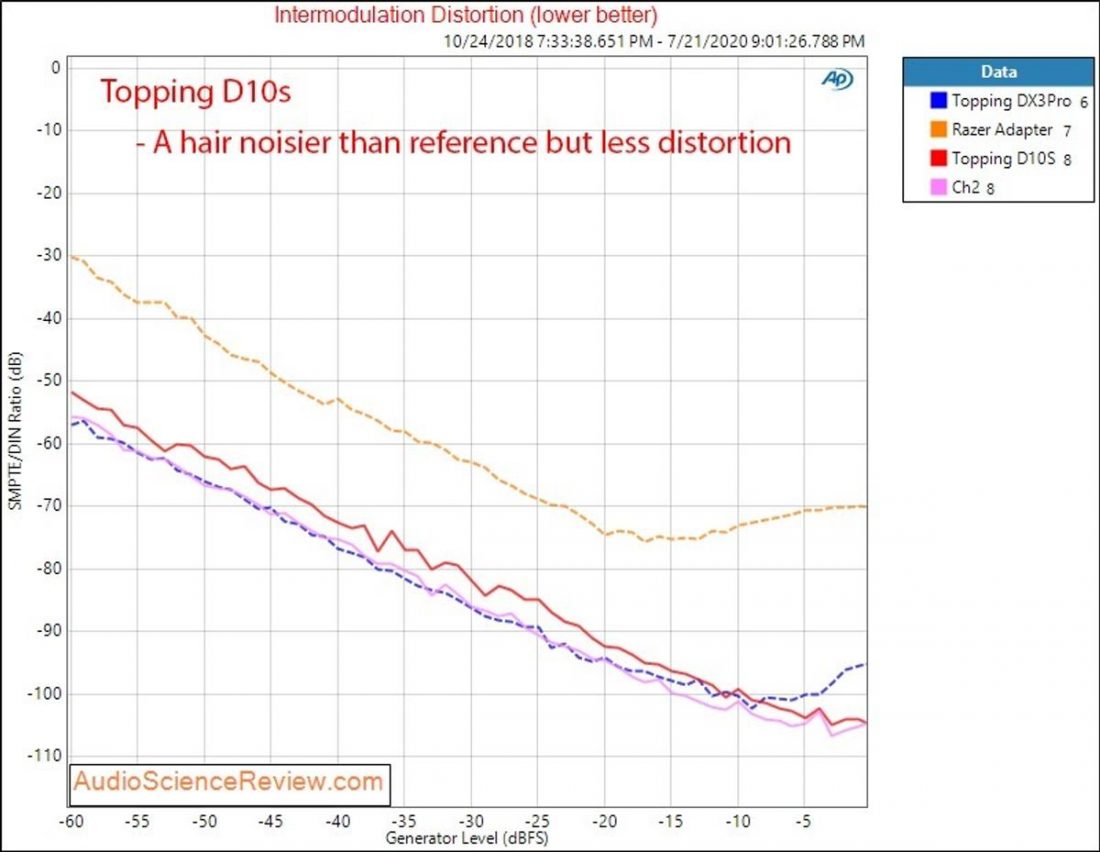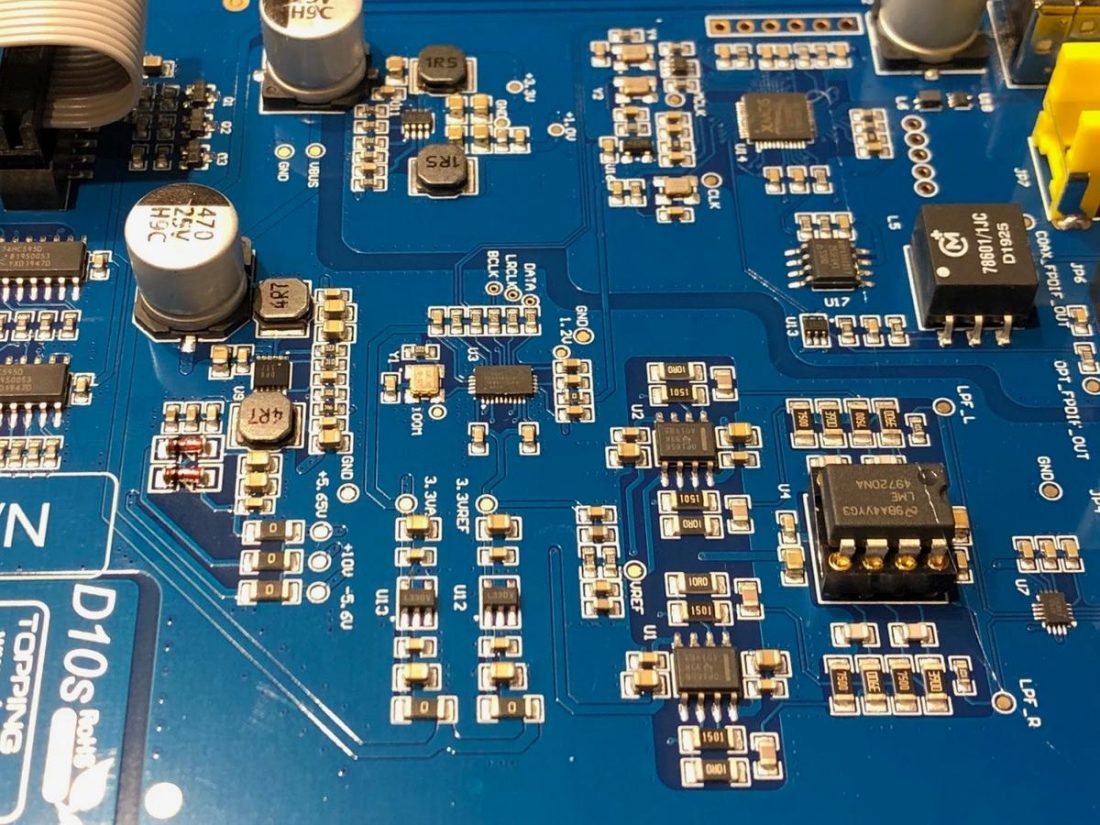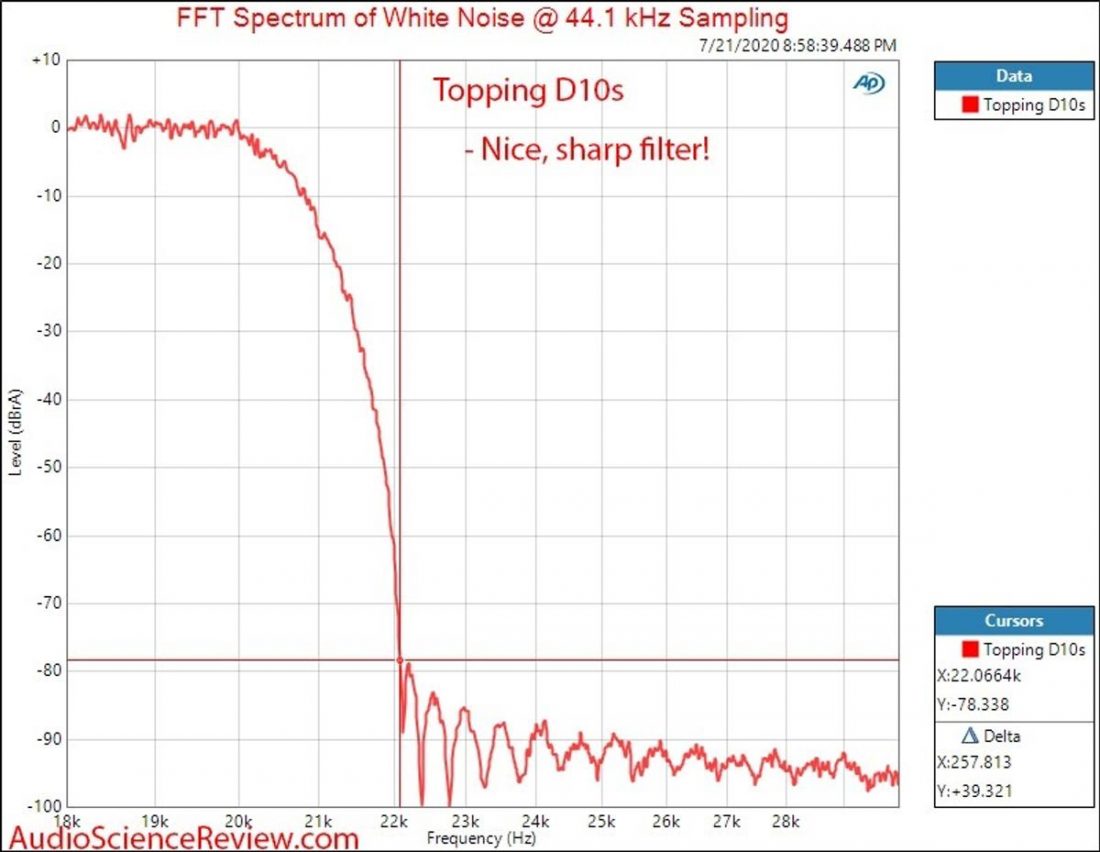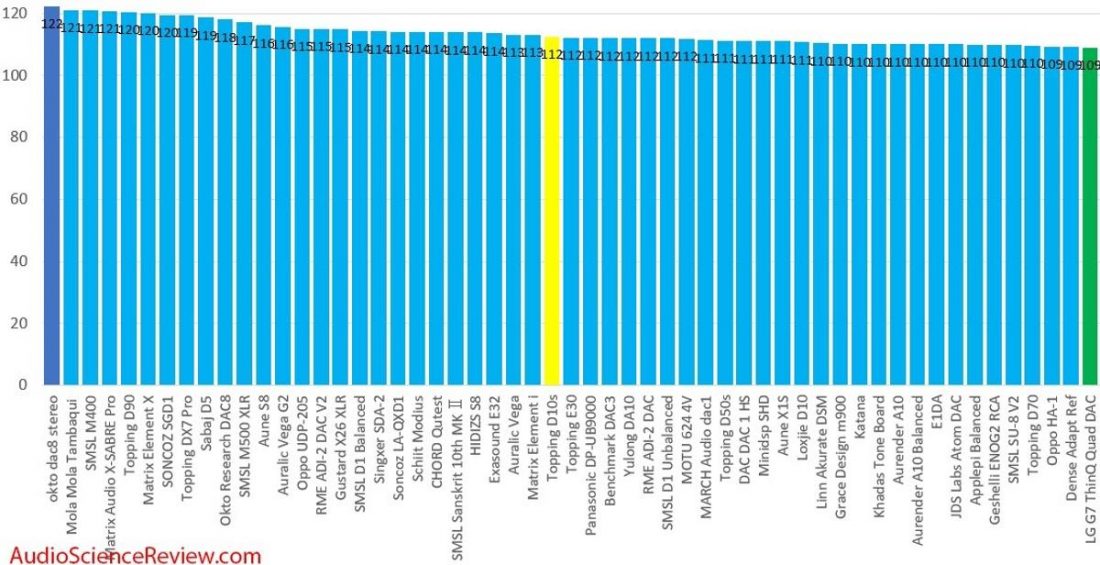As the old adage goes, it never rains but it pours. Just last week I reviewed a very promising new budget Digital to Analog Converter (DAC) on the market, the Soncoz LA-QXD1. This unit sports the ESS ES9038Q2M DAC chip, a few digital inputs, and both single-ended and balanced outputs. It works and sounds great, but I do lament the lack of indicators or display. Hot on the heels of the Soncoz, TOPPING released the D10s DAC and it arrived at my door this week. The D10s is an updated version of their extremely popular D10 budget DAC, now based on the same ES9038Q2M DAC chip as found in the Soncoz (as well as the Khadas Tone Board, TOPPING D50s, and Audioquest Dragonfly Cobalt to name a few). However, the D10s’ feature set and price point are pretty distinctive. At half the price of the LA-QXD1, the D10s offers a very different set of options and functions from the ES9038Q2M alternatives listed above. The iconic large amber LED display and aluminum enclosure of the D10 has returned, with one digital USB input, single-ended RCA analog outputs, as well as the ability to function as a digital bridge with S/PDIF optical and coaxial digital outputs. In my Introduction to DACs articles, I theorized that with the excellent performance of modern DACs, consumers will likely base buying decisions on measurements, file compatibility, and the features that a specific DAC offers. Until recently, the Khadas Tone Board was probably the primary contender for best budget bang-for-the-buck DAC performance king. However, with the D10s at the same $100 price point, sharing the same chipset, and boasting such features as an aluminum case and LED display, it’s very hard to make that recommendation any more. TOPPING has made a name for itself by offering well-built and attractively priced products with outstanding performance measurements. This is actually the first TOPPING device to cross my desk, and let’s see if it lives up to the hype and positive word of mouth set by its precursors. Was there really a need to upgrade the mighty (popular) D10? Should we really have an interest in such entry-level products? Let’s do this thing!
TOPPING Company Overview
TOPPING Electronics & Technology co., LTD is an electronics manufacturer, founded in 2008 and located in Guangzhou, China. They are focused on producing desktop and portable audio products including DACs, headphone amplifiers, and power amplifiers. TOPPING has distinguished itself by manufacturing high-performance, but budget-oriented products such as the D10s, although they have expanded the product line to include more higher-end devices. According to Hailin Huang from TOPPING, “…we make affordable devices for our users since our establishment, so we have experience in this area.” From the beginning, TOPPING has focused on research and development. According to TOPPING, they “invested a large amount of money in purchasing professional audio instruments to ensure performance. In 2016 and 2019, we purchased professional audio testers APx555 and APx555B from Audio Precision, which are the top audio testers in the industry nowadays, for R&D and mass production testing.” Their development process moves from the measurement to the listening phase repeatedly until they are happy with a device’s performance. “Each product will enter the hearing adjustment stage after achieving excellent parameters and performance during the R&D process, then we will again check whether the parameters are still excellent after getting the satisfactory sound, which process is repeatedly refined.” This investment and testing seem to have paid off, as TOPPING (err…) tops the list of many reviews and recommendations. By their own assessment “TOPPING is the top.”
TOPPING D10s Technical Specifications
DAC Chip: ES9038Q2M DAC USB Interface: XMOS XU208 Power Supply: none (uses USB connection for Power Supply) Input: USB Digital Output: Coaxial and Optical S/PDIF Analog Output: RCA Dimensions: 10.3 cm x 14.6 cm x 3.7 cm Weight: 323 g Colors: Silver or Black USB Input: 44.1 kHz – 384 kHz / 16Bit – 32Bit, DSD64-DSD256 (Native), DSD128 (DOP) Optical/Coaxial Output: 44.1 kHz – 192 kHz / 16Bit – 24Bit, DSD64 (DOP)
Decoding Specifications (Line Out / USB In @ 96 kHz)
THD + N @1 kHz A-wt: <0.0002% SNR @1 kHz A-wt: 120 dB Dynamic Range @1 kHz A-wt: 120 dB Frequency Response: 20 Hz – 20 kHz (±0.1 dB), 20 Hz – 40 kHz (±0.4 dB) Output Level: 2Vrms @ 0 dBFS Noise @ A-wt: <2.5uVrms Channel Crosstalk @1 kHz: -135 dB Channel Balance: <0.02dB Output Impedance: 20 ohms
Specification Comparison between TOPPING D10s and D10
TOPPING D10s Packaging
TOPPING doesn’t seem to be wasting any money on frivolous packaging. What arrives is entirely serviceable and that’s about it. An unsealed, plain white cardboard box with the TOPPING logo (fittingly) on top and few other adornments. Open it up and you’ll find the D10s nestled in foam, and rather sloppily wrapped (perhaps this is just my test model) in a logoed plastic bag. The included accessories are a USB cable and a couple of paper inserts.
In the Box
D10s USB 2.0 A-B cable (122 cm) User Manual Warranty Card
TOPPING D10s Design
The aluminum enclosure is a typical sleeve design with front and rear panels attached via 4 screws in the corners. It’s certainly not as nice looking as the single piece of sculpted aluminum that the Soncoz LA-QXD1 resides in, but at half the price, it can be forgiven. Reasonably heavy and solidly constructed, it is entirely functional and weighty enough to not move around with cables connected. The distinctive, large amber LED display is either what will sell you on the D10s’ looks or make you avoid it. It dominates the front panel and there’s no switches, buttons, or anything else up front other than a few logos. The display doesn’t look as slick as a multi-color OLED display, but it is supremely functional. It’s large enough to be read across the room. The amber color is easy on the eyes (thankfully no piercing blue LEDs are to be found anywhere) and it brightens and dims automatically with use.
Power
The D10s is powered by the USB connection to the computer and does not require a separate power source. The display shows “ – – – ” when no digital signal is detected, and automatically powers down to a single dot after a few minutes of inactivity.
USB Interface
The USB interface is class 2 compliant, meaning that it will work plug-and-play on modern operating systems. For higher bit rate compatibility with Windows, TOPPING recommends installing the Thesycon drivers installation package or using the Audirvana music player on Mac.
Digital Bridge Mode
Adding the D10s to my desktop stack solved my main complaint with the Soncoz LA-QXD1 DAC. Namely the lack of display. The S/PDIF optical and coaxial digital connections on the back of the D10s do not function as inputs (as they would on many other DACs). Rather they are solely digital outputs, taking the signal from the USB input and passing it along to another DAC for analog conversion. No need to connect the analog RCA outputs to anything, just connect one of the digital outputs. The Soncoz LA-QXD1 works fantastically, but I miss a display or status LEDs. In my specific situation, putting the D10s between the computer and the Soncoz DAC just makes sense: Now the handy D10s display tells me exactly what signal the Soncoz DAC is receiving. Too cool! An additional benefit of using the D10s as a digital bridge and connecting it to an additional DAC via the optical cable is to nullify any ground loop noise issues. The optical connection will not transmit any such noise to the DAC and the amplifier it is connected to.
TOPPING D10s Internals
I’ve said it before, “…all DACs are not created equal, even those that share the very same D/A converter chip. The chip is not the only thing that matters in audio reproduction quality. The choice and implementation of all the internal components play a role in how the device works and sounds.” The ESS ES9038Q2M reference DAC chip is designed to be a high-performance, 32-bit, stereo audio D/A converter intended for audiophile-grade portable applications (such as mobile phones, digital music players, etc.). Initial implementations are also known to have the infamous ESS IMD Hump. From my Soncoz LA-QXD1 review: The good news is that the IMD measurements of the D10s do not appear to have this hump.
Comparison Chart of DACs based on the ES9038Q2M Chip
While all the above DACs have a ES9038Q2M DAC chip at their heart, you can see that they are implemented and priced quite differently. Again, it’s the file format compatibility and specific features (enclosure, display, Bluetooth, portability, etc.) that come into play when selecting the right DAC for you.
Op-Amp Rolling
The D10s utilizes a socketed op-amp chip, which facilitates replacing chips if desired. From the testing done on the original D10 DAC by the Audio Science Review Forums, it is very doubtful if any benefit will be seen by this process. If that didn’t dissuade you, HIFIGO cautions “be careful, though, as swapping op-amps is definitely not a risk-free procedure, it can instantly destroy your DAC. On top of that, TOPPING doesn’t officially endorse swapping op-amps to users.” So, needless to say, op-amp roll at your own risk! I didn’t attempt it for the purposes of this review.
Filters
The TOPPING D10s has no user-selectable filters. The single filter appears to be a fast roll-off filter similar to the default Soncoz Apodizing (APOD) filter. According to Audio Science Review, at least this filter “is the “correct” one, which we sadly don’t see often…”.
TOPPING D10s Sound Quality, Measurements and Performance
Well implemented DACs are increasingly difficult to distinguish by ear alone. Especially those that are based on the same DAC chip. Yes, the additional circuitry built into the DAC can impact the sound quality, but we are discussing very subtle differences in most cases. That’s why the extremely comprehensive DAC measurement database compiled by the Audio Science Review Forums has become so popular with enthusiasts. What I find interesting is how well new budget models are performing when compared to much more expensive older models. The top-tier of measured DACs is usually determined by ASR’s ever-expanding Signal-to-Noise and Distortion ratio (SINAD) graph. The coveted left-most blue portion of the graph used to be the home of only the pricey audio elite. Now budget models such as the D10s are solidly edging out the old. Audio Science Review sums up their findings of the D10s as: Ok, so it measures just below the Soncoz LA-QXD1 and just above the Khadas Tone Board, but how does it SOUND? Is it better? Worse? My favorite little DAC has grown up in performance… Measured performance is stellar for the category…” I don’t think measurement differences between DACs that are close together at the top end of the SINAD graph are audible to my ears. Seriously. We’re splitting hairs here. A bit like arguing 32-bit is significantly better sounding than 24-bit. Enroll me in a blind listening test? I’d fail. Now I don’t have an extremely high-end DAC on hand to do head-to-head tests. Yes, I think the Chord Mojo does sound different than other DACs I own, but those results are definitely the sum of the unique implementation and components in that little box. I don’t however use it as the DAC in my non-portable desktop headphone setup. While I’m more subjective about my reviews and feelings about how headphones and IEMs sound, I find myself much less so with digital decoding devices such as DACs. I agree it’s all about the music, but I believe a great DAC should strive to be invisible. And this is likely reflected quite well in the performance measurements. I can hear how my amps and headphones work together to produce their own particular unique flavor of sound. This DAC does what it should. Namely, it decodes and seamlessly passes along neutral, uncolored, and unaltered audio to the things that make (and change) the sound. The D10s sounds transparent in my chain. I’m absolutely used to the Khadas Tone Board’s sound, and much more recently the Soncoz, and I could detect no significant differences with the TOPPING D10s in their place. Subjective subtleties such as richness, tonality, micro-dynamics, soundstage, etc. are so fine between these three DACs as to be indistinguishable to my ears.
TOPPING D10s Conclusion
Thank you to HIFIGO for sending along the TOPPING D10s to Headphonesty for review. You can purchase it directly from them here for $99 USD. A budget product is always a compromise. You can’t have it all. Price, performance, or features. Pick 2 of the 3. Want high performance and all the features? It’s going to cost you. On the other hand, if you want great performance and a low cost, you are going to have to compromise on features. That’s the TOPPING D10s in a nutshell. Budget price with excellent measured performance, but a limited (and somewhat unique) set of features. How much you want or need those features is going to determine if this is the right DAC for you. Hate the large amber LED display, or want something with more upscale aesthetics? Then you may want to look elsewhere. Do you need balanced audio outputs or a variety of digital inputs? Easy choice, buy the Soncoz LA-QXD1. Need Bluetooth? How about the TOPPING D50s? However, if you simply need a great working DAC, with a USB input and single RCA analog output, and almost no other bells or whistles (other than a display), it’s hard not to excitedly recommend the D10s. $100 these days buys you top(ping) tier performance. Amazing! More money buys you more features. It buys a better-looking enclosure. It may even buy you (arguably) better performance. But I’m not sure you can currently buy better value than what is offered by the TOPPING D10s DAC.
